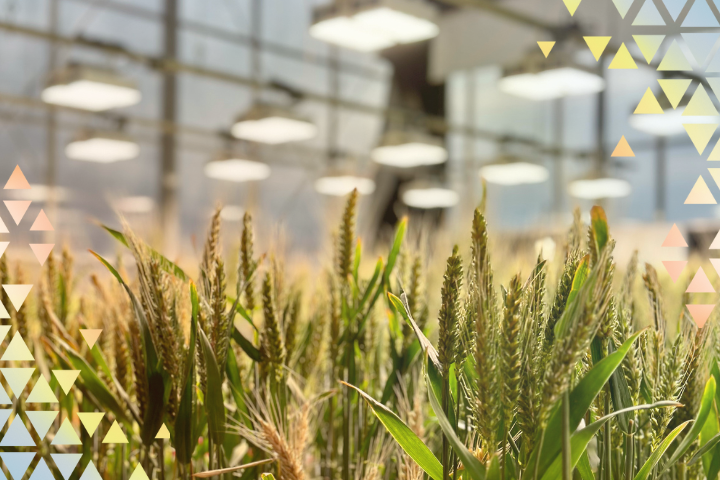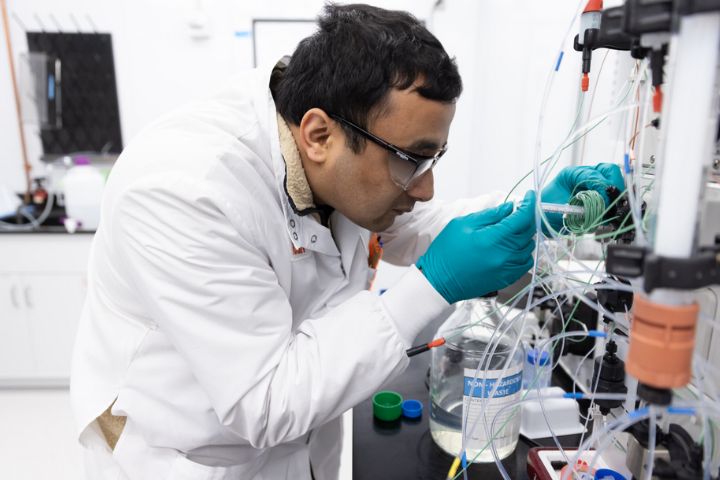This year marks a decade since the publication of Jennifer Doudna and Emmanuelle Charpentier’s seminal Science article that brought the concept of CRISPR to the masses.
Interestingly, initial response to the research was tempered, but once it caught on with the scientific community, it caught on fast. Ten years later, CRISPR is one of the most celebrated biological advances of our time, and Doudna and Charpentier – the former a member of the Inari Scientific Strategy Board – were awarded the 2020 Nobel Prize for chemistry. The technology has even reached the level of vernacular relevance to become its own verb. (“Did you CRISPR that?” is a real sentence!)
What we do at Inari would not be possible without CRISPR. Our SEEDesign™ platform with our efforts to bring nature-positive outcomes to the global food system literally demands it.
To help us reflect on this momentous anniversary, we asked some of our colleagues who regularly use CRISPR to convey what the technology has meant in its first 10 years – and where it could take us next. Here’s what they had to say.

What does CRISPR represent to you?
Chris Bagley, Senior Director of Transformation Optimization: For me, CRISPR represents achievable solutions for the future of Earth and humanity. Not only is it a game-changer in agriculture and how we feed the world, but in medicine it will cure devastating diseases that still take so many lives.
Hannes Claeys, Senior Scientist: After decades of studying genes and genomes, it finally gives us an unprecedented ability to make the kinds of precise changes we need to improve human health and agriculture. It’s only been around for 10 years, but I can no longer imagine doing biotechnology without it.
Hannah Pham, Senior Scientist: It probably sounds cliché, but CRISPR really is a game-changing technology that allows for rapid and intentional modification of the DNA of living organisms. There have been technologies that allowed scientists to do this in the past, but it was a slow and time-consuming process to alter those tools for the targets you wanted to edit. With CRISPR, a lot more has opened up because it is so much faster, cheaper, and more versatile to target many different parts of the genomes you are interested in.
How has CRISPR shaped your career path?
Ward Decaestecker, Scientist: I had the opportunity to start a Ph.D. in the lab of Thomas Jacobs on the development of CRISPR tools in plants. Working on this cutting edge technology was really what motivated me. The CRISPR field is moving rapidly and there are always new discoveries and technologies that emerge. Having the chance to continue developing these technologies at Inari was really a dream come true.
Yi Jin, Director of Research and Development: Even though I had very little opportunity to use CRISPR in my academic research, the potential, versatility and impact of this technology across different biology and therapeutic disciplines always amazed me. I knew I would love to work with it at some point in my career, so when I was offered the opportunity to join Inari and develop CRISPR tools for agriculture three years ago, I jumped on it without hesitation. It has been a challenging, yet fulfilling journey at Inari, expanding CRISPR technology in different crops and developing advanced multiplex gene editing tools.
Hannah: I have always been interested in gene editing, and while I came from a mammalian stem cell culture background, I had some experience with zinc finger proteins and TALENs. I came to Inari to work on building a plant cell-based screening system, but I stayed because of the opportunity to develop new CRISPR systems for use in agriculture. CRISPR has allowed me to work in a brand new industry to unlock the potential of these tools for plants.
In your opinion, what is the biggest impact CRISPR has made on agriculture so far?
Ward: The speed at which CRISPR is progressing and already beginning to make an impact on society is really astonishing. The technology allows us to generate plants with new traits at much shorter timelines than what is conventionally done through breeding or classical genetical engineering. It has been only 10 years since the discovery of CRISPR, but there are already products on the market.
Yi: The biggest impact CRISPR has made so far on agriculture is that it offers a much faster and more efficient path to improve crop performance than ever before. Scientists have successfully shown that, using CRISPR technology, one can enhance yield and disease resistance of a number of crops, either by introducing desired gene alleles or removing unwanted genetic material directly in target germplasms.
Hannah: To me, it’s proving the multiplexing capability of the CRISPR system – that it enables the ability to make multiple edits simultaneously in desired traits in just one generation. This is what will ultimately have the biggest impact on agriculture
What do you hope to see in the next decade of CRISPR?
Chris: In the next decade, I really hope to see CRISPR changing lives. I hope to see farmers getting more yields even when reducing inputs. I hope to see consumers embracing a technology that will lead to less food insecurity across the world. I hope to see loved ones cured of diseases or have new and effective treatment options. And I can’t wait to see products and applications that we cannot yet even imagine. We are just scratching the surface of what CRISPR can do for our world, most of which we do not even realize yet.
Hannes: In the past 10 years, there has been tremendous progress in developing the technology and showing what it can do on a small scale. In the next 10 years, I hope to see many of the promising uses of CRISPR – ones currently showing up in papers, conferences, patent applications, projects and discussions inside and outside Inari – be widely deployed in the field. By improving yield and especially sustainability in both industrial and developing countries, I hope it begins to fulfill its potential of being a major tool to make agriculture less taxing on the planet and more equitable.
Yi: I would love to see significant advancement of CRISPR technology in simultaneous manipulations of a large number of loci within a genome in a precise and predictive manner. I also would love to see the ambition of engineering CRISPR-Cas proteins with desired functions coming to fruition, with the help of advanced modeling approaches that involve machine learning/artificial intelligence and synthetic biology.
If you weren’t working with CRISPR, what do you think you’d be doing today?
Chris: If I were not working with CRISPR, I would undoubtedly still be working on trying to make better plants in the lab. However, the analogy I see is that without this technology, I would be trying to perform a complicated surgery with a stone knife instead of a surgical scalpel. That’s how much sharper and more precise CRISPR is at enabling greater and more favorable outcomes.
Ward: I might have been a biology teacher. I think it would be really rewarding to teach young people about the fascinating world of biology, and especially plant biology.
Hannes: I would hopefully still be in agricultural biotech. But with a far smaller toolbox to work with, it wouldn’t be nearly as much fun!
RELATED POSTS
Three Ways Gene Editing Supports Biodiversity
Genetic diversity in plants is the foundation of resilience, productivity, and adaptability. It enables crops to withstand environmental pressures, resist diseases, and thrive in varying climates, the result of millennia…
Inari’s Labs Achieve ‘My Green Lab’ Certification
We have a deep commitment at Inari to food system sustainability, which in addition to prioritizing food security and improved farmer well-being puts a focus on better caring for our…
An October Reflection on Food System Sustainability
By Jamie SaxonHead of Sustainability – Harvest season is in full swing in the U.S., a time of year that’s equal parts exciting, nerve-wracking and busy for farmers as they…


